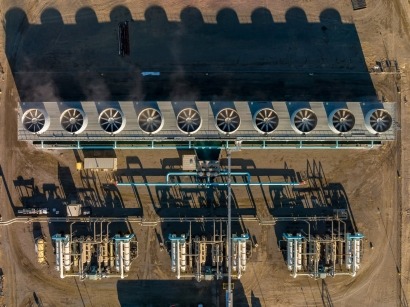
The U.S. Department of Energy found that geothermal energy could provide up to 120 gigawatts of reliable, flexible generation capacity in the U.S. by 2050 and generate over 16% of the U.S.’ anticipated electricity needs. Geothermal is a viable clean energy option in many regions where it’s difficult to build other renewable energy sources, notably the Asia Pacific region. Still, geothermal is not yet widely used, because traditional technologies can only be deployed economically in areas where underground heat is easily accessible.
"When we began our partnership with Fervo, we knew that a first-of-a-kind project like this would require a wide range of technical and operational innovations. Unlike traditional geothermal power, Fervo uses drilling techniques pioneered by the oil and gas industry to harness heat that would have previously been difficult to access.
"To tap into this subsurface heat at our site in Nevada, Fervo dug two horizontal wells and installed fiber-optic cables to capture data that shows the flow, temperature and performance of the geothermal system in real-time. The result is a geothermal plant that can produce round-the-clock CFE using less land than other clean energy sources and drawing on skills, knowledge, and supply chains that exist in other industries.
"From our early commitment to support the project’s development to its successful completion, we’ve worked closely with Fervo to overcome obstacles and prove that this technology can work," said Michael Terrell, Senior Director, Energy and Climate, Google, in a post on the company's website.
Google recently announced a partnership with Project InnerSpace, a leading non-profit organization dedicated to the global development of geothermal energy, to accelerate the adoption of geothermal energy.
"We see our efforts as part of a bigger picture. As we continue on our journey to 24/7 CFE, we’ll keep pushing boundaries, testing new ideas and working with others to transform the power sector globally. We’re excited to see others — like the U.S. federal government — join us by setting 24/7 CFE goals. And we’ll continue to work with our partners to advocate for policies that advance the clean energy transition," concluded Terrell.

